Alabama Hills: A First Time Visitor Guide
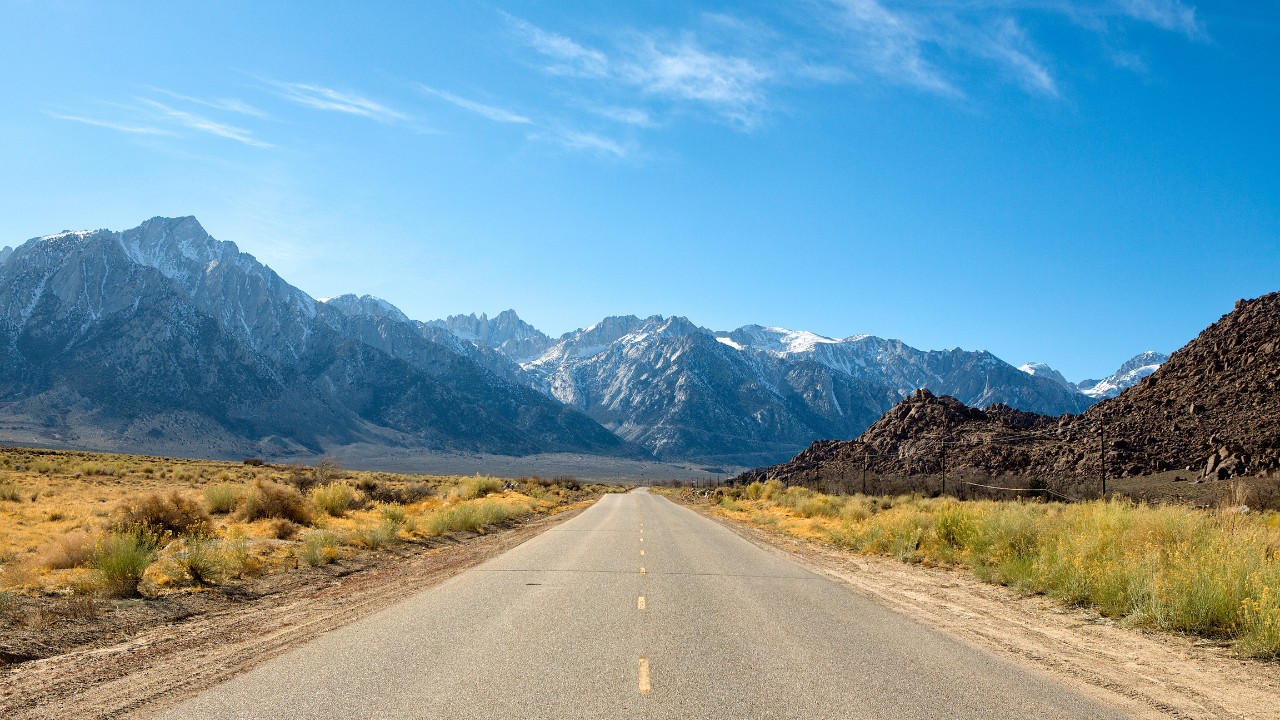
If you’re planning a first time visit to California’s Alabama Hills, this post is going to help you with that. I visited this area awhile back and was totally shocked by how amazing it is in just about every single regard, from it’s hikes, to landscapes and everything you can do there. And this is what I’ll be sharing with you in this post:
Basic info:
- Name: Alabama Hills
- Location: Inyo County California (South Eastern Sierras)
- Fee: Free
- Things to do: Camping, scenic drives, hiking, stargazing, and more
- Hotels nearby? See best options.
Overview:
The Alabama Hills are located in the Sierra Nevada Mountains in California (south eastern end) and offer an otherworldly landscape of rounded boulders, unique rock formations, and expansive desert views. This iconic destination, located near Lone Pine, is a favorite among hikers, photographers, and outdoor enthusiasts. With a rich history and stunning natural beauty, the Alabama Hills make for a perfect day trip or extended adventure. If you’re planning your first visit, this guide will help you make the most of your time exploring this rugged yet accessible area.
Photos:
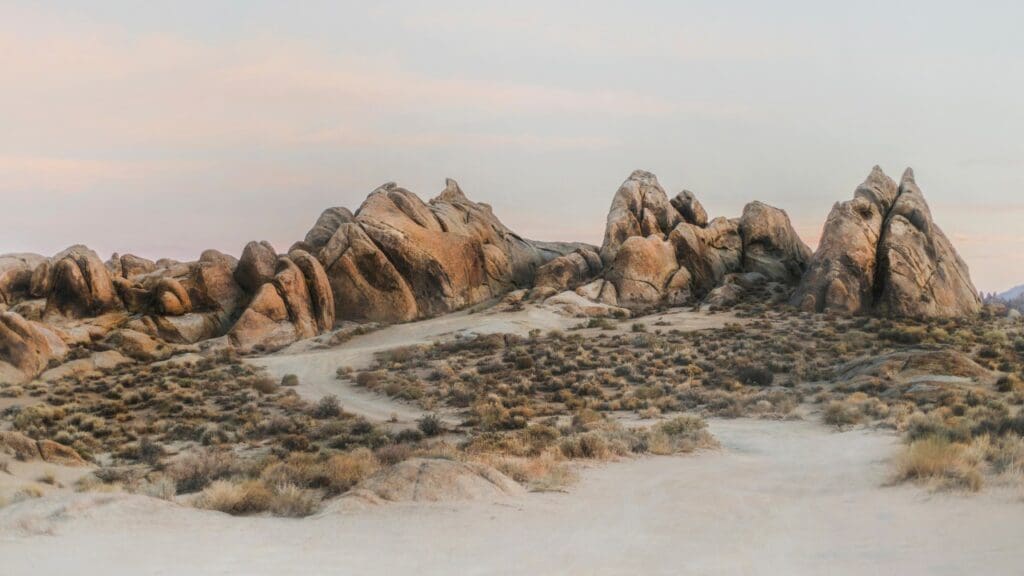


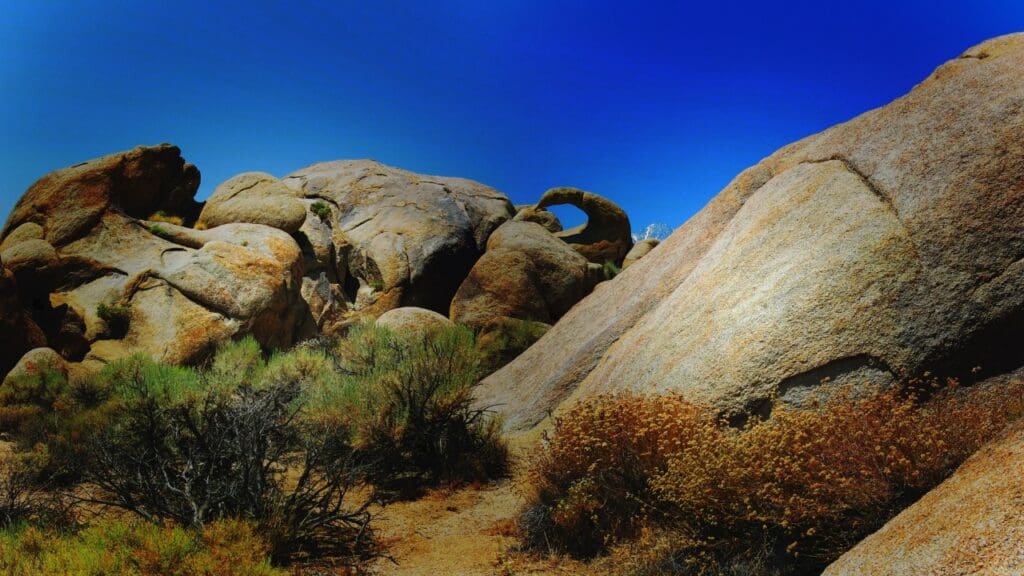
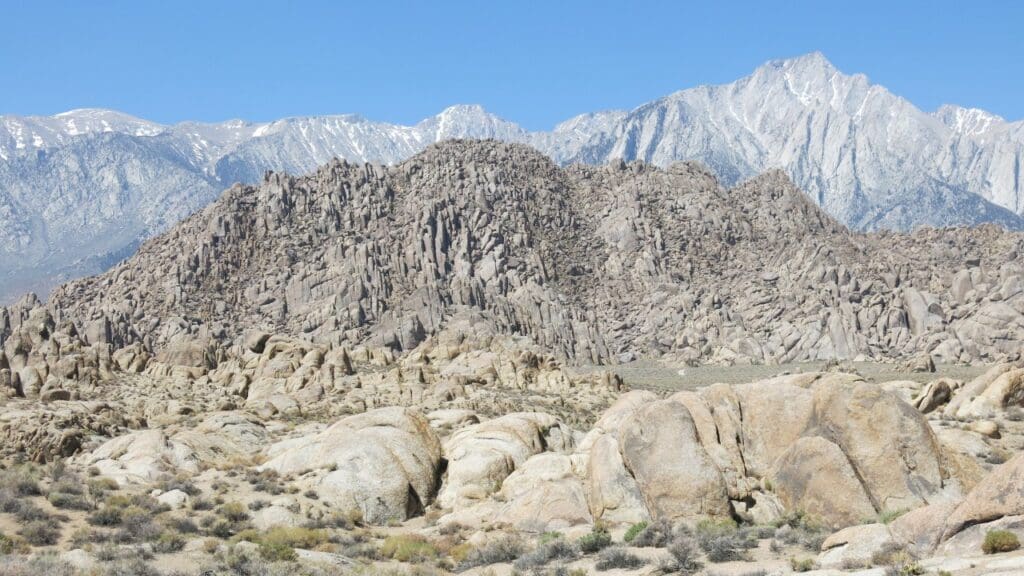
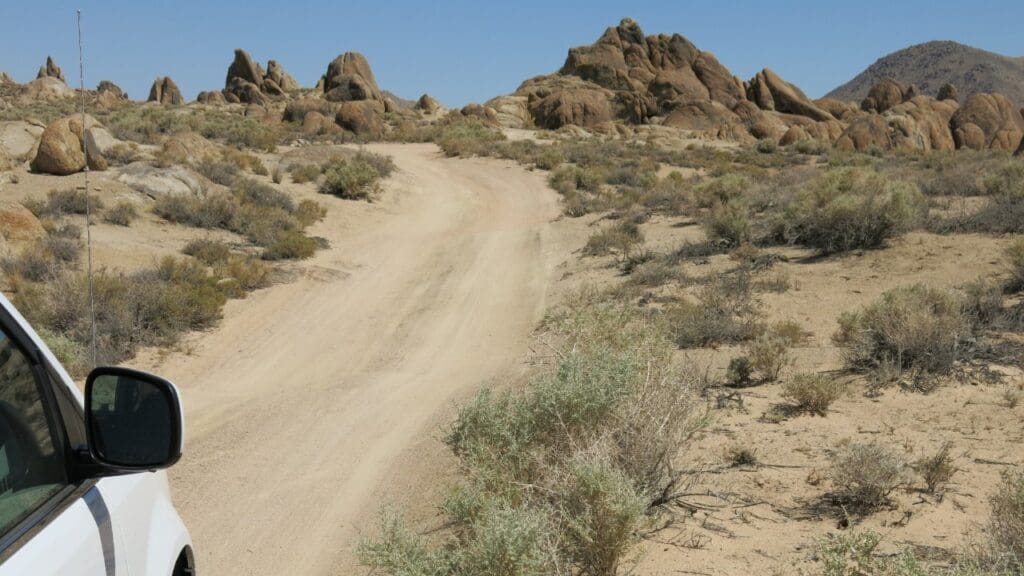
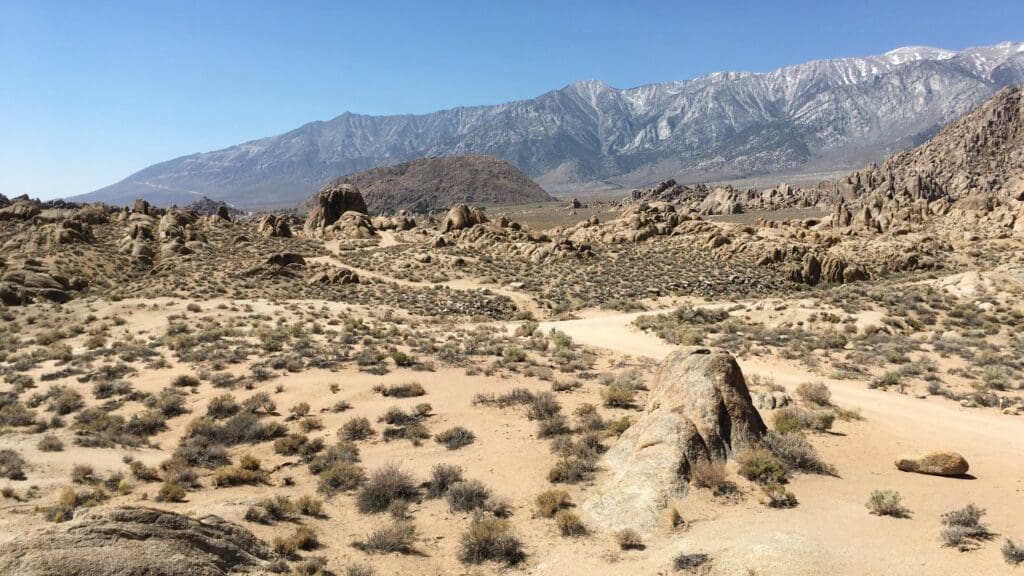
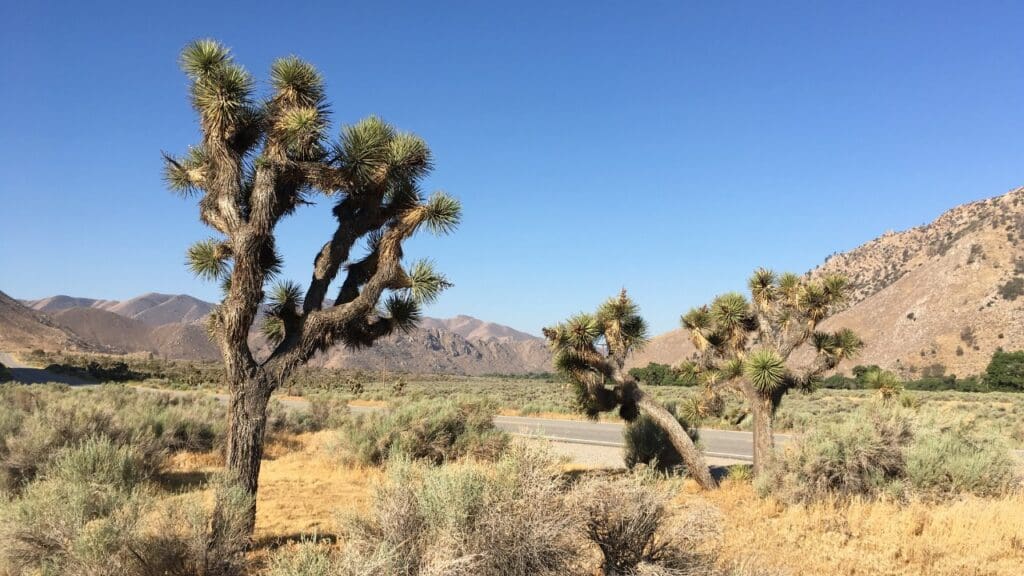
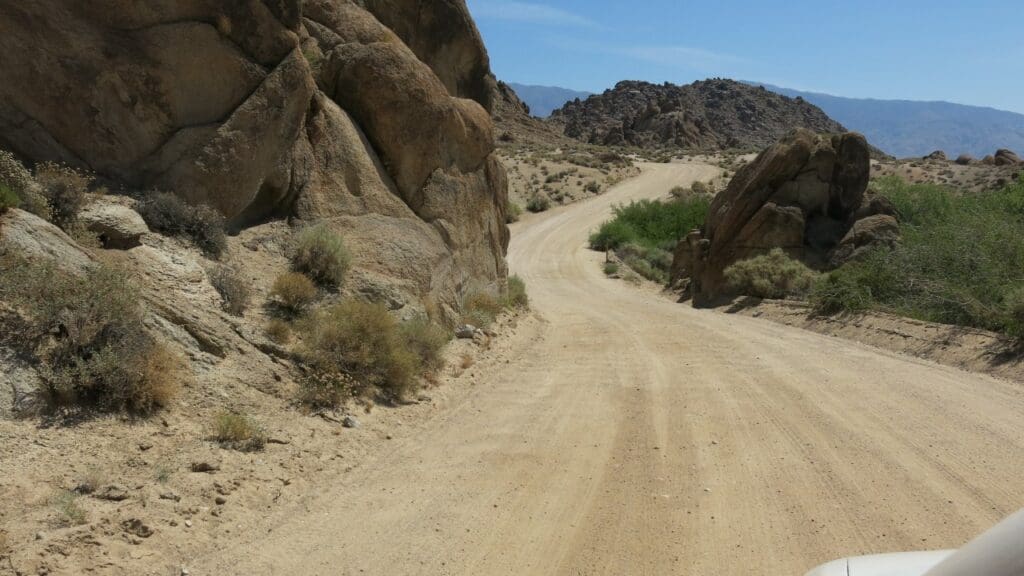
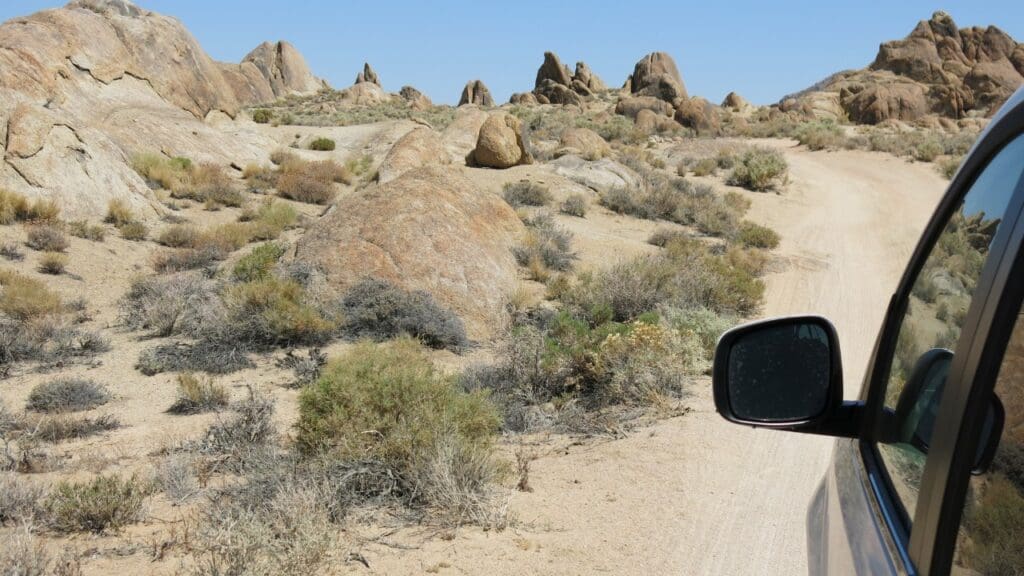
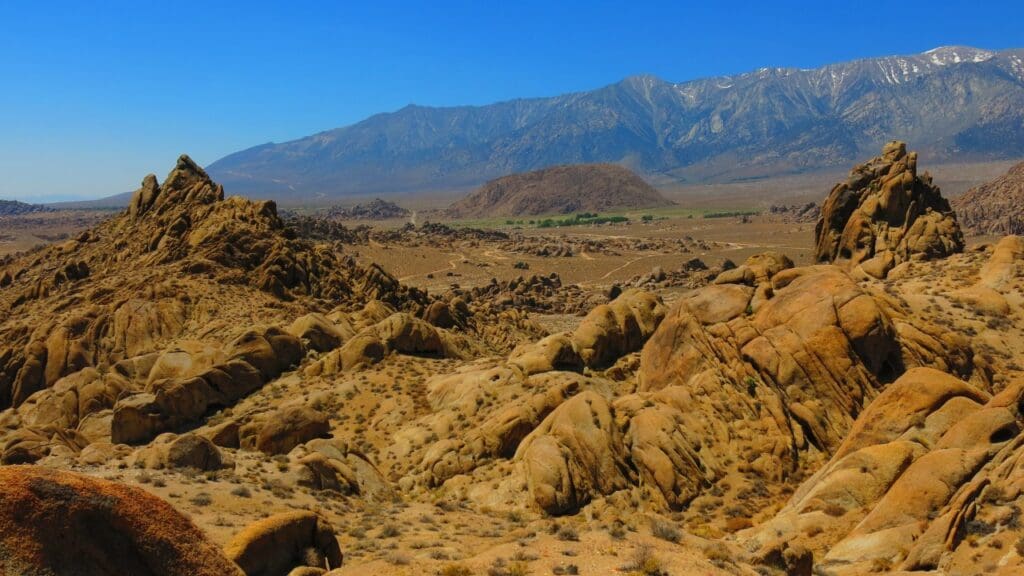

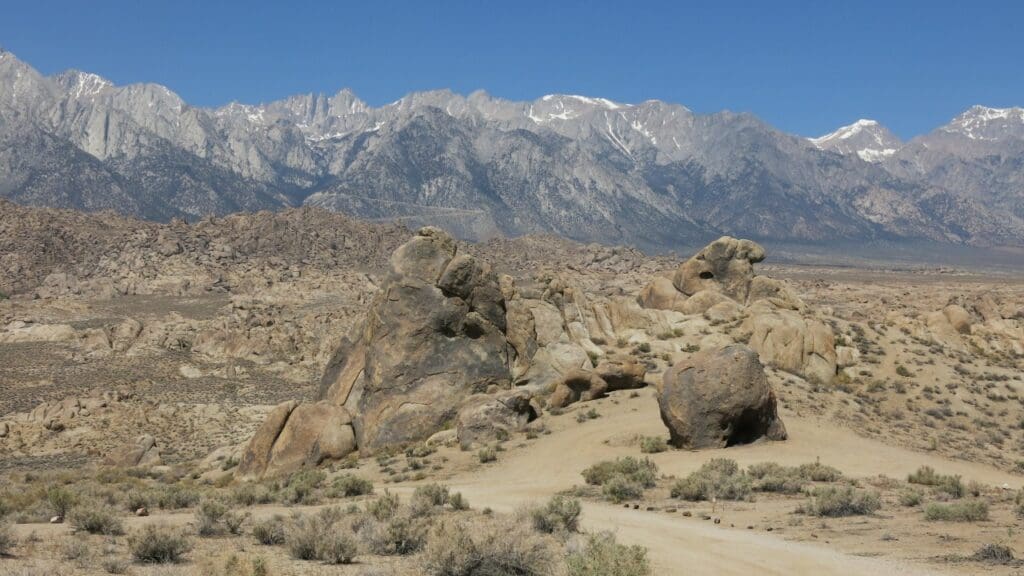
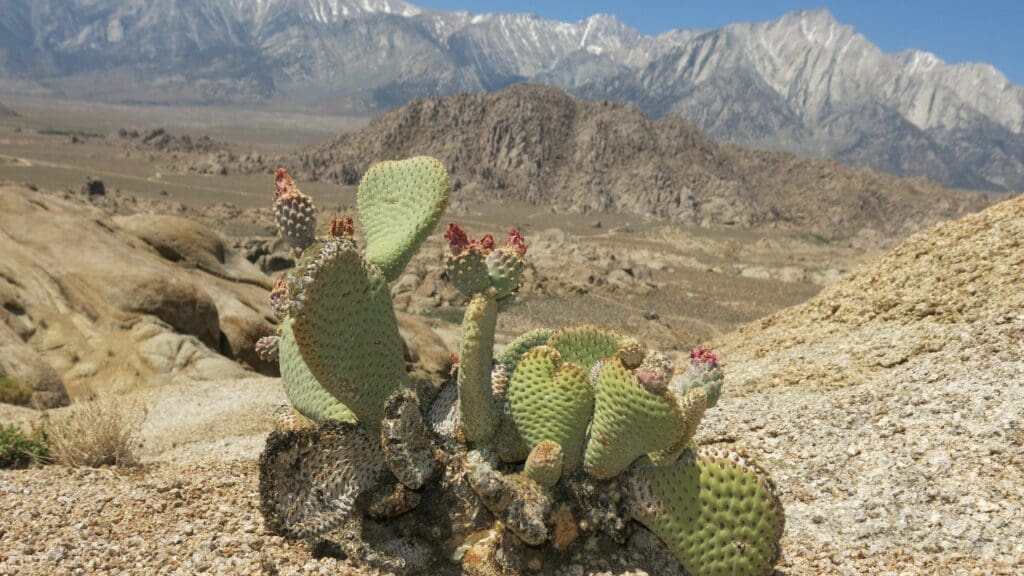

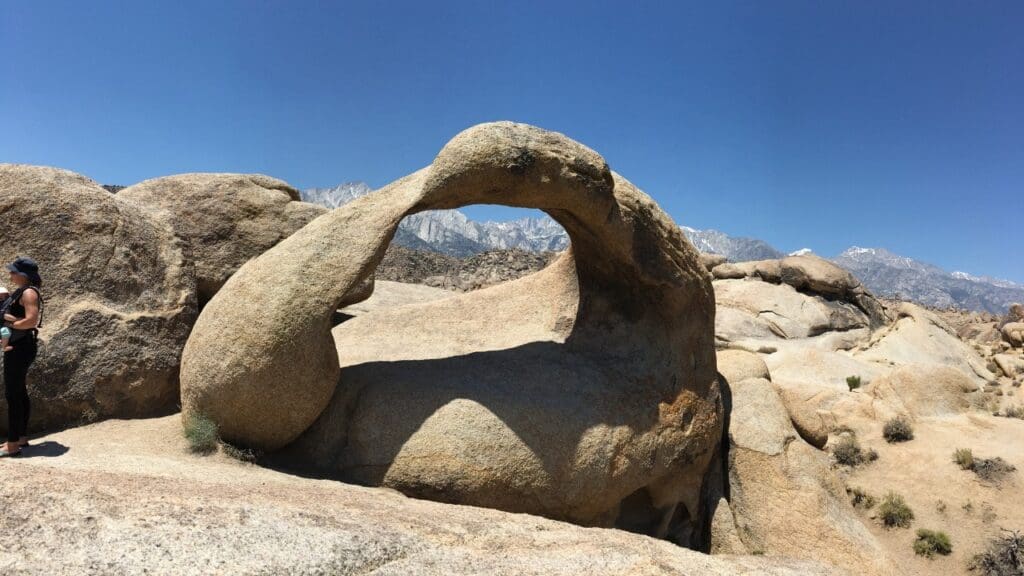
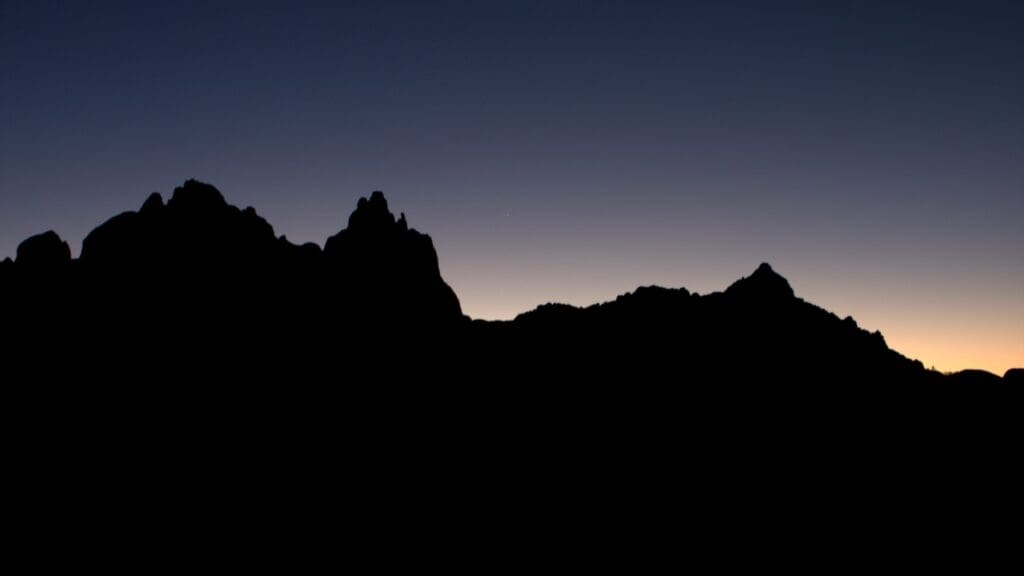
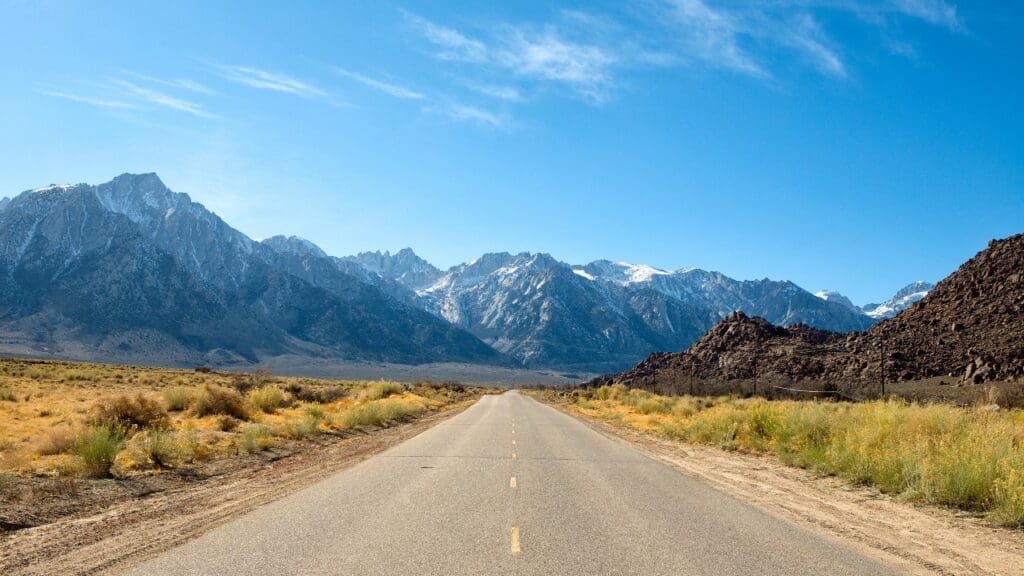
Getting There:
The Alabama Hills are located in Inyo County, just outside the small town of Lone Pine, California. They are easily accessible by car, making them an excellent stop for road trips or a destination on their own.
- By Car: From Los Angeles, the drive is about 3.5 hours north via U.S. Highway 395. From Las Vegas, it takes about 4 hours west, also using U.S. Highway 395. As you approach Lone Pine, turn onto Whitney Portal Road, which leads directly into the Alabama Hills.
- Parking and Access: There are no official entrance fees or gates. The area is open to the public and managed by the Bureau of Land Management (BLM). Parking is available along dirt roads that branch off Whitney Portal Road, with popular sites marked by signs and trailheads.
Best Times to Visit:
You can visit this area year round and each season has it’s own benefits/disadvantages. I personally went here around late January and for the most part really enjoyed the visit due to the pleasent hiking weather. Here’s a breakdown of each season and what you need to know:
- Spring (March to May): Spring is one of the best times to visit, with mild temperatures, wildflower blooms, and clear skies. Daytime temperatures range from 60°F to 75°F, making it ideal for hiking and photography.
- Summer (June to August): Summer can be hot, with temperatures often exceeding 90°F (32°C). If you visit during summer, it’s best to explore in the early morning or late afternoon to avoid the heat.
- Fall (September to November): Fall is another great time to visit, with cooler temperatures and fewer crowds. The temperatures range from 55°F to 75°F (13°C to 24°C), providing a comfortable climate for outdoor activities.
- Winter (December to February): Winter brings cooler temperatures, ranging from 40°F to 55°F (4°C to 13°C) during the day, with the possibility of snow-capped Sierra peaks in the background. It’s a quiet and peaceful time to explore, but nights can be chilly. I can also tell you that blizzards are known to happen here too during this period, but aside from that, it’s a good time to visit.
Things to do:
Hiking and Exploring Rock Formations: The Alabama Hills are known for their impressive rock formations, many of which are accessible via short hikes or even by car. You can even find natural arches, like the kinds in Arches National Park. Some must-see spots include:
- Mobius Arch Loop Trail: This is an easy 0.6 miles round-trip hike with barely any elevation gain. The trail leads to Mobius Arch, the most famous rock formation in the area. The arch frames Mount Whitney, the tallest peak in the contiguous United States, creating a perfect photo opportunity. The trail is well-marked and takes about 30 minutes to complete.
- Heart Arch: This is another easy 0.4 miles round-trip hike with barely any elevation gain. This quick hike leads to Heart Arch, a natural rock formation with a heart-shaped window. It’s a lesser-known spot but offers a beautiful view of the Sierra Nevada Mountains.
- Shark Fin Rock: A 0.5 mile round trip hike with minimal elevation gain that leads hikers to a unique rock formation resembling a shark fin emerging from the desert floor. It’s a great stop for photography, especially at sunset when the rock glows orange.
Camping: The Alabama Hills offer dispersed camping, which is free and allows for a true off-grid experience. Campers can set up tents or park RVs at designated spots along dirt roads. There are no facilities, so you’ll need to bring your own water, food, and supplies.
Rock Climbing: The Alabama Hills are a popular destination for rock climbers, with routes ranging from beginner-friendly boulders to challenging climbs. The area offers both trad and sport climbing, making it a versatile spot for climbers of all levels. Some of the popular climbing areas include Boulder Gulch and Candy Store Wall.
Photography: With its dramatic rock formations and towering Sierra backdrop, the Alabama Hills are a paradise for photographers. Sunrise and sunset are the best times to capture the beauty of the landscape, as the soft light enhances the colors and shadows of the rocks. Mobius Arch and Movie Road are particularly photogenic spots.
Stargazing: Due to its remote location and minimal light pollution, the Alabama Hills are an excellent spot for stargazing. On clear nights, the Milky Way is often visible, making it a favorite destination for astrophotographers and those looking to experience the beauty of a star-filled desert sky.
Movie Road Tour: The Alabama Hills have a rich film history, with over 400 movies and TV shows filmed here, including Westerns, sci-fi films, and commercials. Visitors can take a self-guided tour along Movie Road, where information signs highlight filming locations for movies like “Gunga Din,” “Django Unchained,” and “Iron Man.” Maps are available at the Lone Pine Film History Museum.
Nightmare Rock: Despite the name, it’s just a rock that has a funny face painted on it that you can park by and explore the surrounding areas. This was my original stop when I visited Alabama Hills and it makes for great photos.
Places to Stay:
While there are no hotels or developed campgrounds within the Alabama Hills themselves, there are several accommodation options in nearby Lone Pine:
- Lone Pine Campground: Located just 5 miles from the Alabama Hills, this developed campground offers tent and RV sites with basic amenities, including toilets and potable water. It’s a convenient base for exploring both the Alabama Hills and nearby Mount Whitney.
- Hotels in Lone Pine: The town of Lone Pine has a range of hotels, motels, and inns for those seeking more comfort. See the top options.
- RV Parks: For those traveling in RVs, there are several RV parks in Lone Pine, including the Boulder Creek RV Resort and the Lone Pine RV Park, which offer full hookups, showers, and laundry facilities.
Tips For Visitors:
- Bring Plenty of Water: The desert environment can be dry and hot, so carry plenty of water, even for short hikes. Dehydration is a real risk in the Alabama Hills, especially during summer.
- Dress in Layers: Temperatures can vary significantly between day and night, so wear layers to stay comfortable. Sunscreen, a hat, and sunglasses are also essential, as there is very little shade in the area.
- Be Prepared for Rough Roads: Many of the dirt roads in the Alabama Hills are rough and uneven, so a vehicle with high clearance is recommended. While most passenger cars can handle the main roads, 4WD is useful for exploring some of the more remote areas.
- Check the Weather: The weather in the Alabama Hills can change rapidly, so check the forecast before you go. Strong winds are common, and summer thunderstorms can bring flash flooding to low-lying areas. Also when visiting in the winter, be aware of potential snowstorms.
Nearby Attractions:
If you have extra time, consider exploring other nearby attractions:
- Mount Whitney: For experienced hikers, Mount Whitney, the highest peak in the contiguous United States, is just a short drive from the Alabama Hills. Permits are required for hiking to the summit, but the views along the Mount Whitney Trail are incredible.
- Manzanar National Historic Site: Located about 10 miles north of Lone Pine, this historic site offers a sobering look at one of the internment camps used during World War II to detain Japanese Americans. It’s a meaningful stop for those interested in U.S. history.
- Ancient Bristlecone Pine Forest: A bit farther afield (about 90 miles north), this forest is home to some of the oldest trees in the world, including some over 4,000 years old. The twisted trunks and remote location make it a fascinating side trip.
- Death Valley National Park: Located about 2 hours south of Alabama Hills, it makes for another great stop to check out if you’re headed south of the area after. It’s a gigantic park known for it’s unique terrain and crazy hot weather.
Final Things to Know:
The Alabama Hills are a stunning and accessible destination for first-time visitors looking to experience the rugged beauty of California’s eastern Sierra Nevada. With its unique rock formations, panoramic views, and abundant outdoor activities, this iconic area offers a memorable adventure for anyone seeking the spirit of the American West. Whether you’re hiking to Mobius Arch, camping under the stars, or exploring film history along Movie Road, the Alabama Hills promise an unforgettable journey into one of California’s most scenic landscapes.

